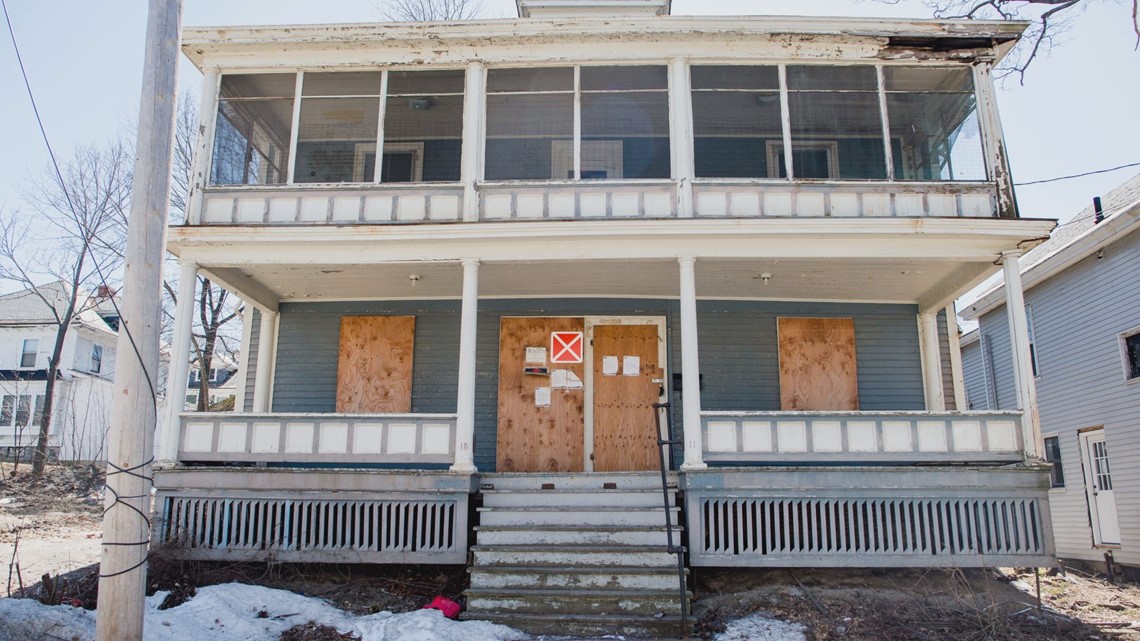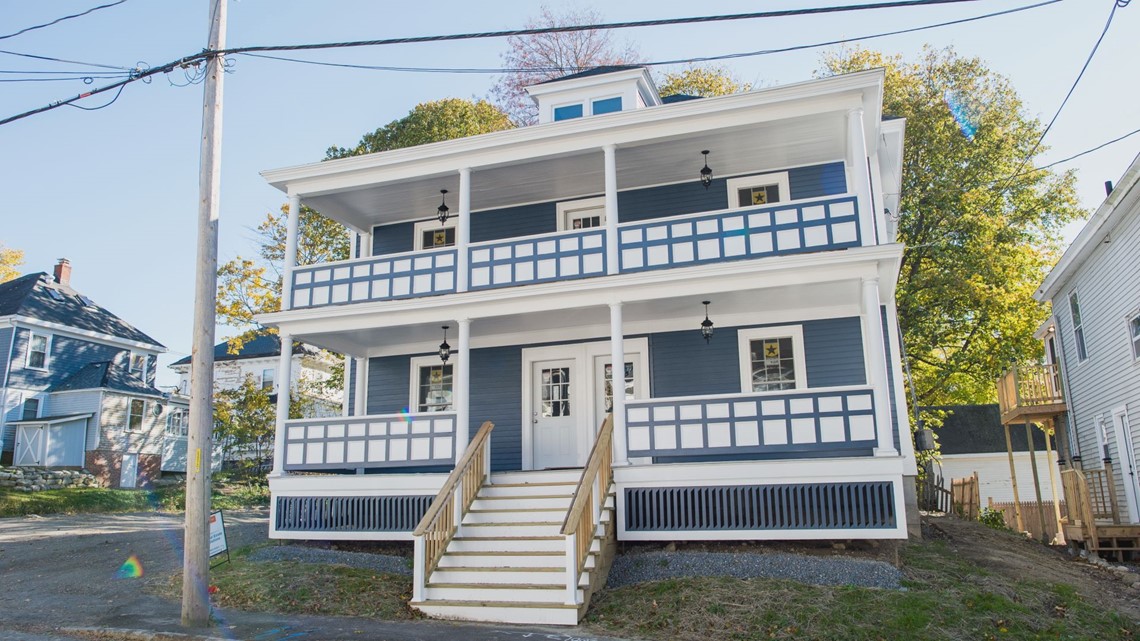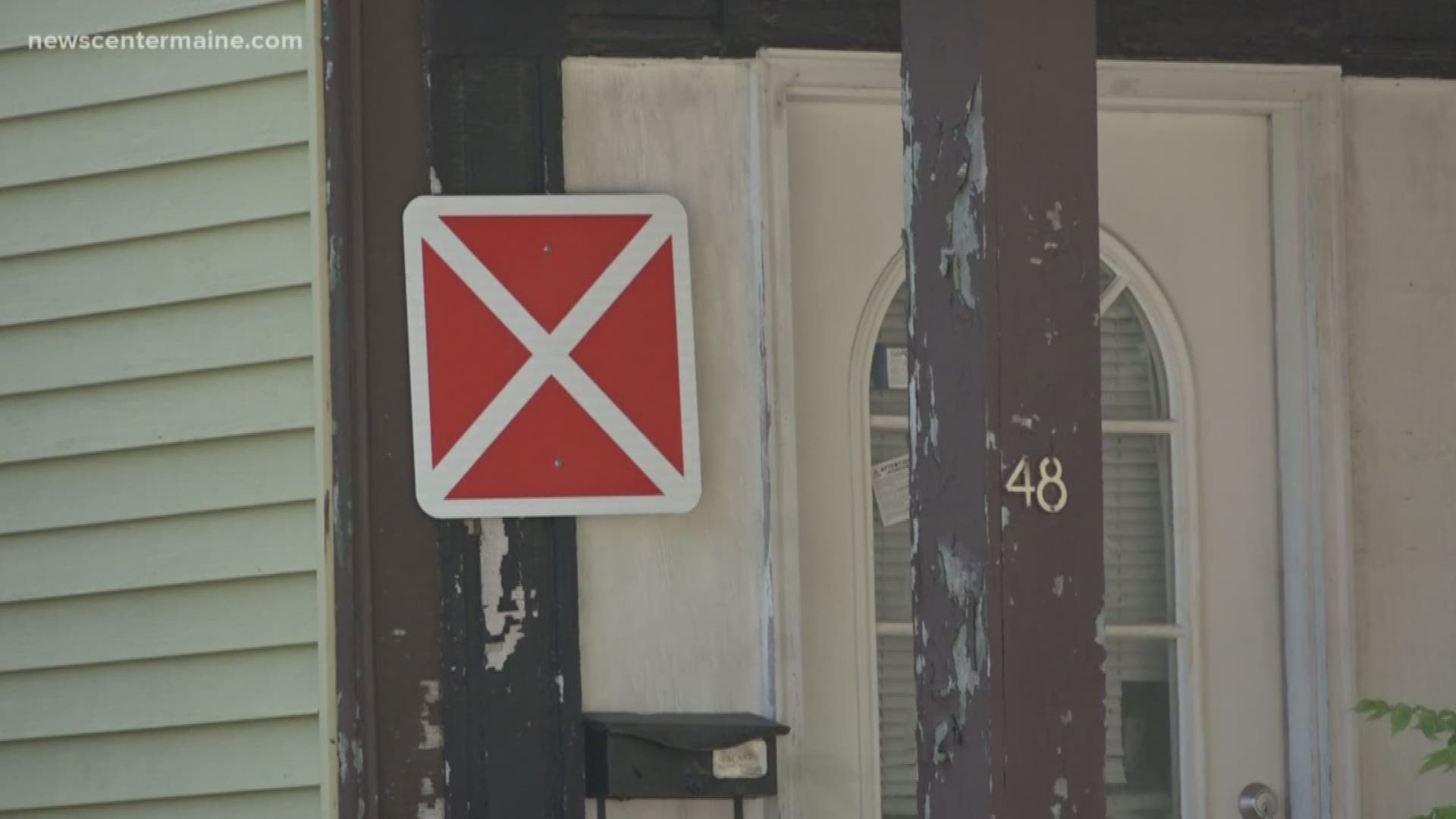BANGOR, Maine — "This [home] was one that was about to just be torn down literally in 48 hours," said Community Real Estate Solutions' Kortnie Mullins of her Garland Street property in Bangor.
You'd never know from looking at it on the outside but Mullins' duplex was only two days away from being demolished.
A red placard with a big, white "X" posted outside the home marked it as "dangerous."
"Imagine this home with barely a foundation, barely a roof, pretty much just a shell," said Kortnie. "Fate had it that I just happened to come and see it."


Within 48 hours, instead of the Bangor City Council voting to demolish the home, Kortnie and her husband, Nicholas Mullins, were drafting up a contract to buy it.
"Two weeks later, we bought it," said Kortnie. "They decided not to tear down the home."
The couple started restoring homes in Bangor in 2016 to turn condemned, to comfy.
"We don't flip or redo," said Kortnie's husband and business partner, Nicholas Mullins. "We restore."
"We just started seeing these homes that needed help," said Kortnie.
The Mullins' came through at the last minute to save the home from demolition but it wasn't the first time.
They have already restored nearly a dozen Bangor homes with no plans to stop.
"We're not always trying to sell them," said Nicholas. "We also want to hold onto them and provide housing for those that are a little less fortunate too."


In the last few years, the number of vacant, placarded buildings in Bangor has dropped from more than 200 to 152. It's a nearly 25% decrease.
Since February about a dozen homes, including the Mullins', were taken off of the city's placard program and are now occupied.
"The best case scenario is someone steps in and saves [the home]," said Bangor's Director of Code Enforcement, Jeff Wallace.
Wallace admitted, this only happens approximately 1 in 20 times, like in the case of the Mullins' Garland Street property.
"Some places you walk in and it's real obvious that its time has come," added Wallace. "Other times you walk in, it's real obvious, 'hey, this one's salvageable.' The ideal situation is just someone to give the buildings the love they need."
He's hopeful others will take notice of these vacant properties around the city.
"If someone sees this and is like, 'oh, I can save some properties,' if you've got that in mind, reach out to us, absolutely," said Wallace.
"I'd like to see more and more [homes] get restored, not only by us, but other people," added Kortnie. "If we can inspire more people to do the same thing and build up the community, everyone's just going to be better off."
Demolition, which is slated for a vacant home on Charles Street in tax foreclosure, is a last-case scenario, according to Wallace.
"When we've got properties that just no one has interest in fixing up and they've reached the state where they're no longer safe, that's when we move in and demolish," said Wallace.
It costs the city between $10,000-15,000 to demolish a single-family home depending on what is discovered inside.
It's a problem the city of Portland does not face, where the lack of available housing means homes never stay empty for long.
According to city officials, Portland doesn't have a placard program to classify its vacant homes because there are barely any in the city.

